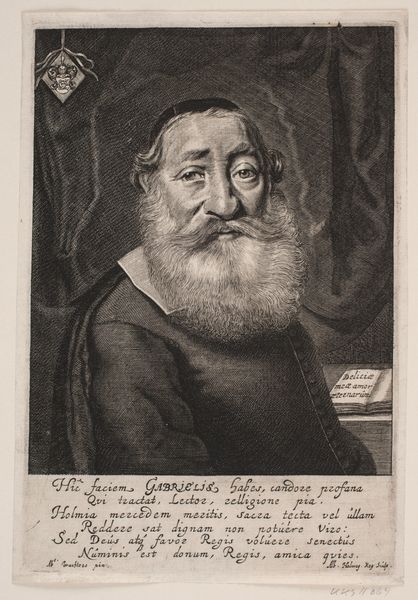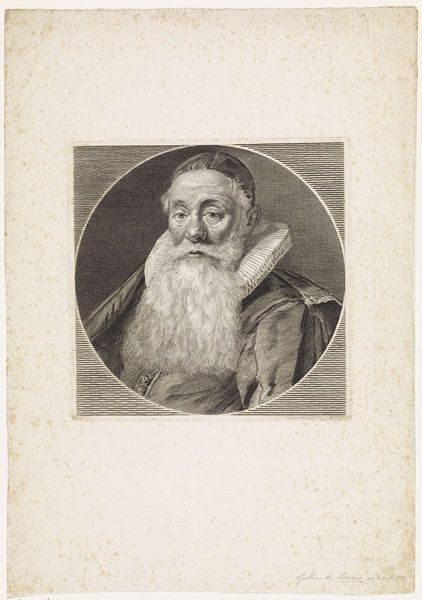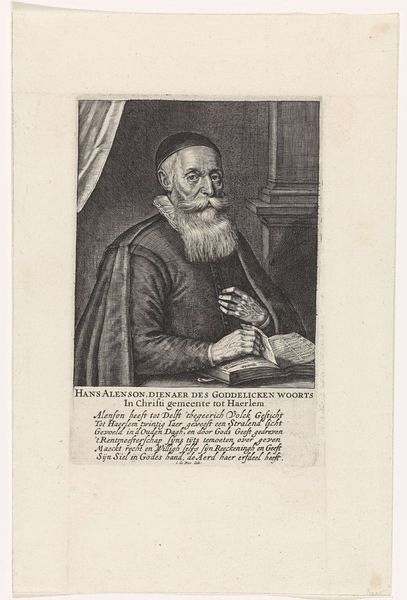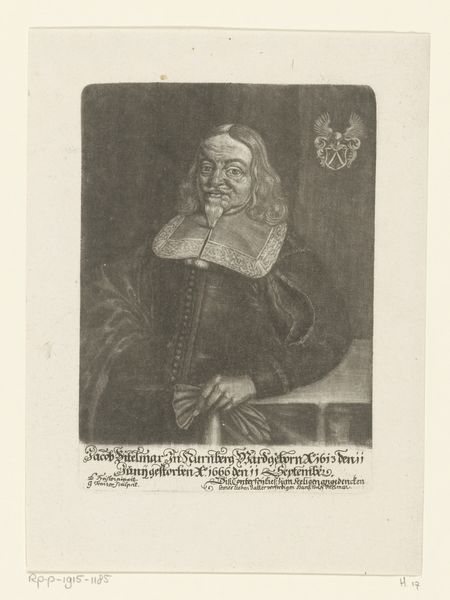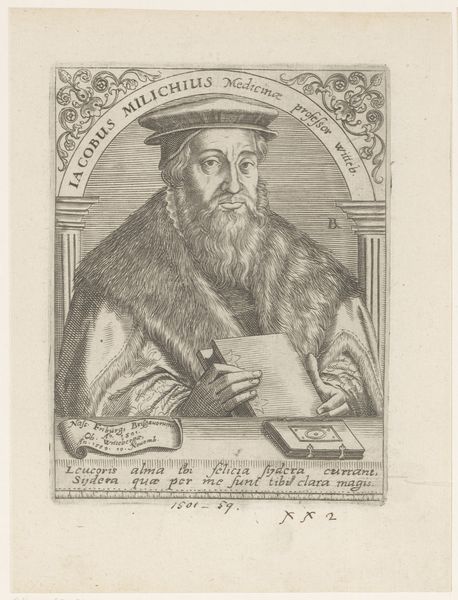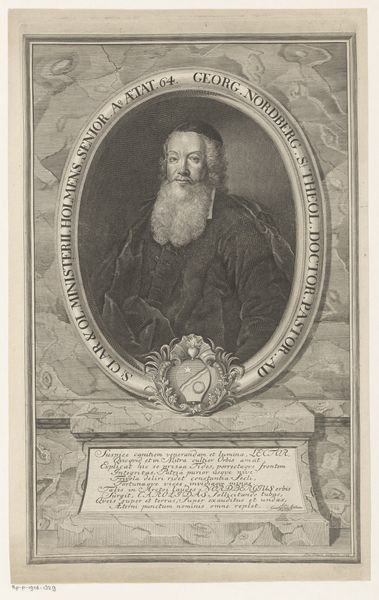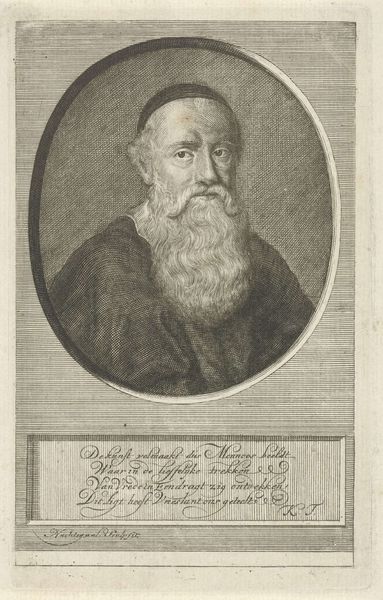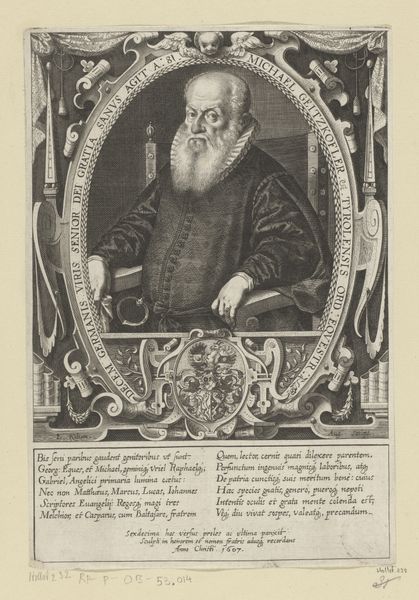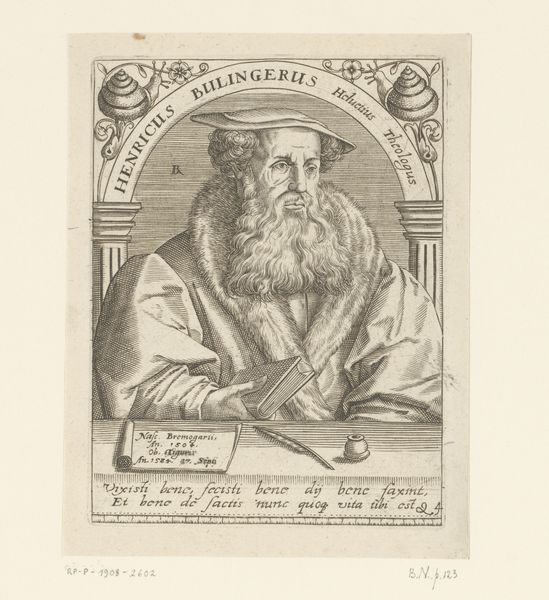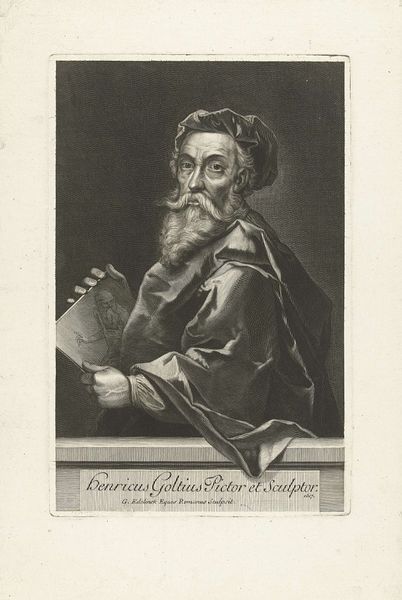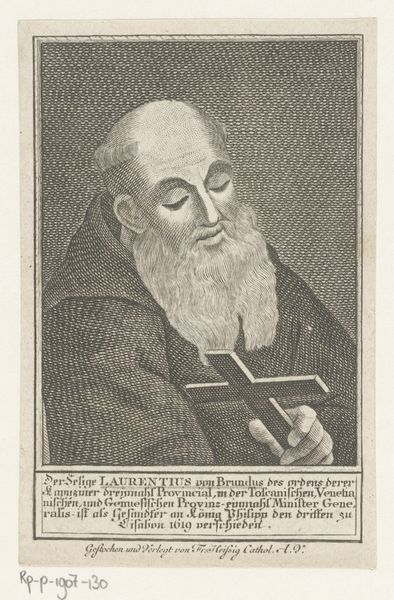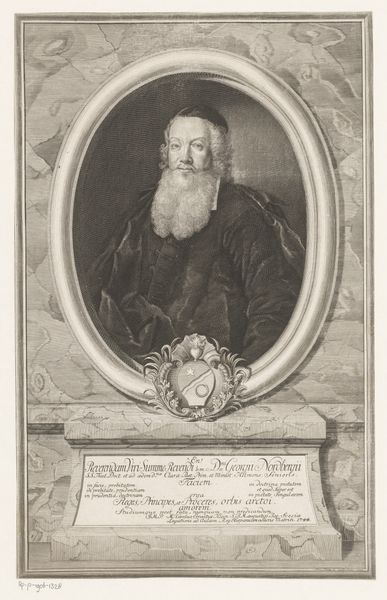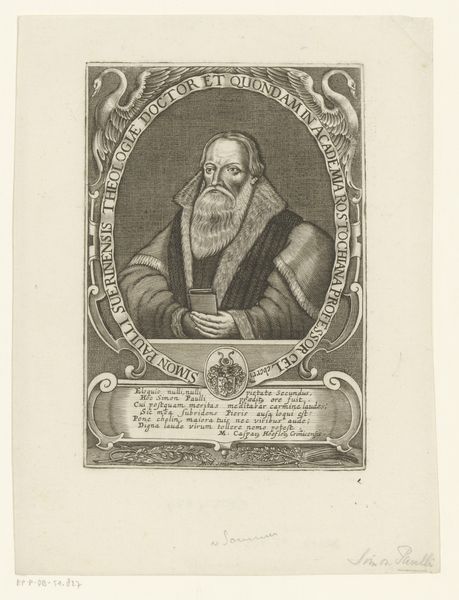
print, engraving
#
portrait
#
baroque
# print
#
portrait reference
#
portrait drawing
#
history-painting
#
engraving
Dimensions: 229 mm (height) x 152 mm (width) (bladmaal)
Editor: This is Albert Haelwegh's engraving "Gabriel Kyng," created in the 1660s. It's striking how the artist has used lines to define the texture of the beard and clothing. What does this print suggest to you? Curator: For me, this piece opens up avenues for considering the material conditions of printmaking in the 17th century. Engraving wasn't just about representing Gabriel Kyng; it was a process, a form of labor. How does the production of this image – the very act of its creation through carefully incised lines – shape its meaning, do you think? Editor: I suppose it makes it more accessible, or at least reproducible. Unlike an oil painting, many copies could be made, influencing how widely Kyng’s image was spread. Curator: Precisely! The choice of engraving directly relates to its potential for wider distribution and consumption. This touches on class and accessibility. Who had access to painted portraits versus these more readily available prints? And what does the Latin text included at the bottom of the engraving contribute? Editor: It’s a laudatory inscription. Perhaps it elevates Kyng's status or targets a specific educated audience. Curator: Absolutely. And think about the labor involved not just in the engraving but in the production of the paper, the ink. It all contributed to the image we see. By considering the materials and processes, we gain a deeper understanding of its social and cultural context. Editor: So, by focusing on the materiality, we move beyond just admiring the likeness and consider the economic and social systems that enabled its creation. Curator: Exactly. It invites a critical examination of power, access, and the circulation of images in 17th-century society. Hopefully it offers a deeper and more complex reading of this portrait.
Comments
No comments
Be the first to comment and join the conversation on the ultimate creative platform.
